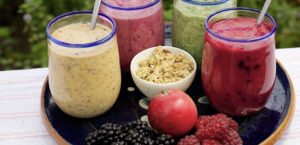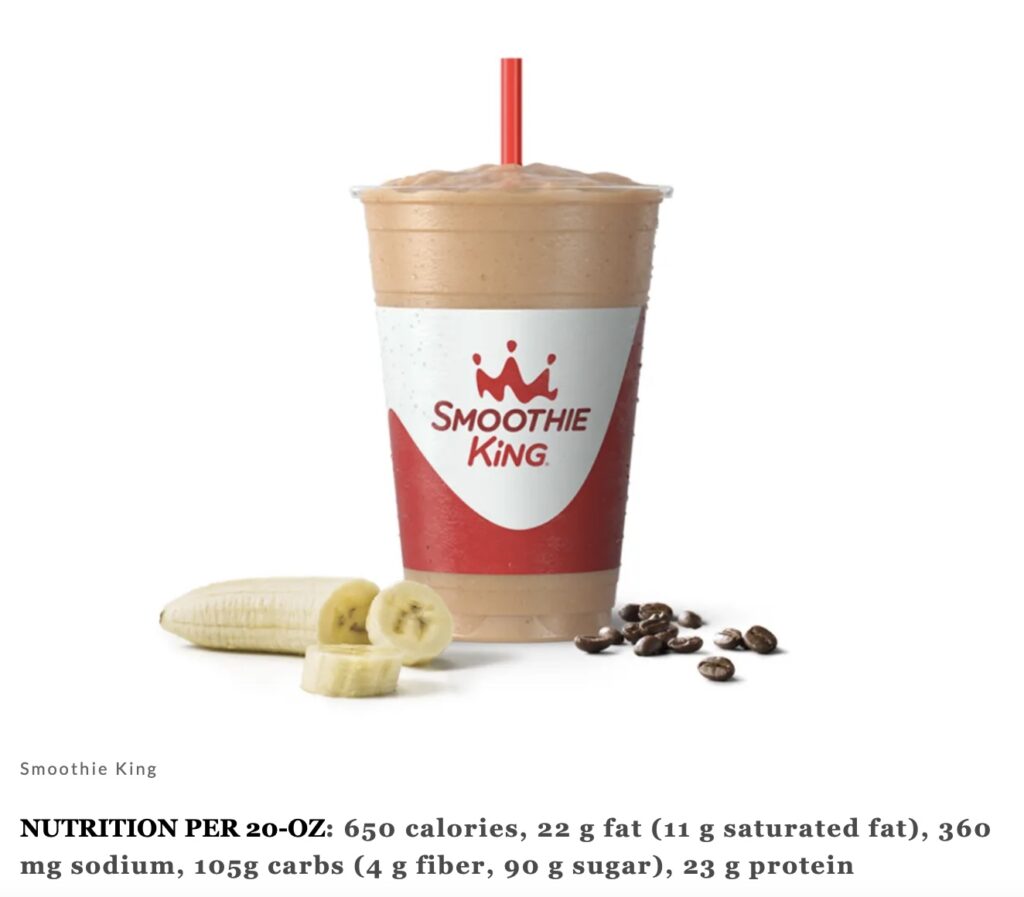High-GI Foods can Trigger "Food Addiction," Obesity
A danger of many commercial smoothies that are:
- Void of fiber
- High in artificial sugars and sweeteners
- High in glycemic load
is the threat of an exaggerated reward response, which can lead to “food addiction.”
In individuals who are vulnerable to food addiction (e.g., through dysregulated and hypersensitive reward systems), high glycemic index carbohydrates can trigger addiction-like neurochemical and behavioral responses akin to those seen in processes of substance dependence with loss of control (e.g., “addiction”).
The resulting “food addiction” is not only empirically validated but also a possible factor contributing to disordered eating and obesity alike.
Simple Solutions to Reduce Glycemic, Insulin, & Reward Responses
To reduce excessive glycemic loads (GLs) and the associated insulin and reward responses, follow these simple suggestions:
- Prioritize dietary fiber by including greens, legumes, and/or nuts/seeds in each meal/snack. One of the many benefits of dietary fiber intake is that it regulates blood sugar levels by acting as a glucose buffer and slowing the release of sugars into the bloodstream. This is thought to be true for total and LDL cholesterol and a variety of other food toxins.
- Avoid highly processed foods (e.g., cookies, crackers, etc.) that are often low in fiber, high in sugar, and intentionally designed to be highly palatable, thus salient and “addictive” in order to increase product consumption (See Bray et al., 2022; sections 3.8 and 4.1.8).
- Check in with your body. Glucose and other high glycemic load foods are not inherently bad or unhealthy. The body needs glucose. Glucose and high-GL foods CAN be problematic though if they are: a) denied when the body needs them and/or b) taken in when the body does not need them. Before, during, and after rigorous exercise (e.g., 30-60 minutes of high cardiovascular activity), real-food-higher-GI options are often what the body needs and denying this can cause alterations in the way the brain responds to glucose, in order to ensure energy needs are met. On the other hand, before, during, and after a long car ride or sedentary work day, high glycemic load options (e.g., cookies, crackers, etc) can be mentally stimulating, but aggravating to the body, as they can produce unregulated blood glucose increases.

St. Patrick’s Day Hot Take: Choose Cabbage Over Corned Beef
As we don our festive hues of green, St. Patrick’s Day brings a fresh take on tradition with a focus on cabbage, a leafy powerhouse

Bountiful Greens: A Nutrient-Rich Delight
In the treasure trove of nutrition and diet, there lays a brilliant emerald: dark leafy greens. Whether it’s St. Patrick’s Day or any ordinary day,

Let’s Talk About Smoothies II
Let’s Talk About Smoothies Smoothies are all the rage these days, but are they really all they’re cracked up to be? From the green vegetable


